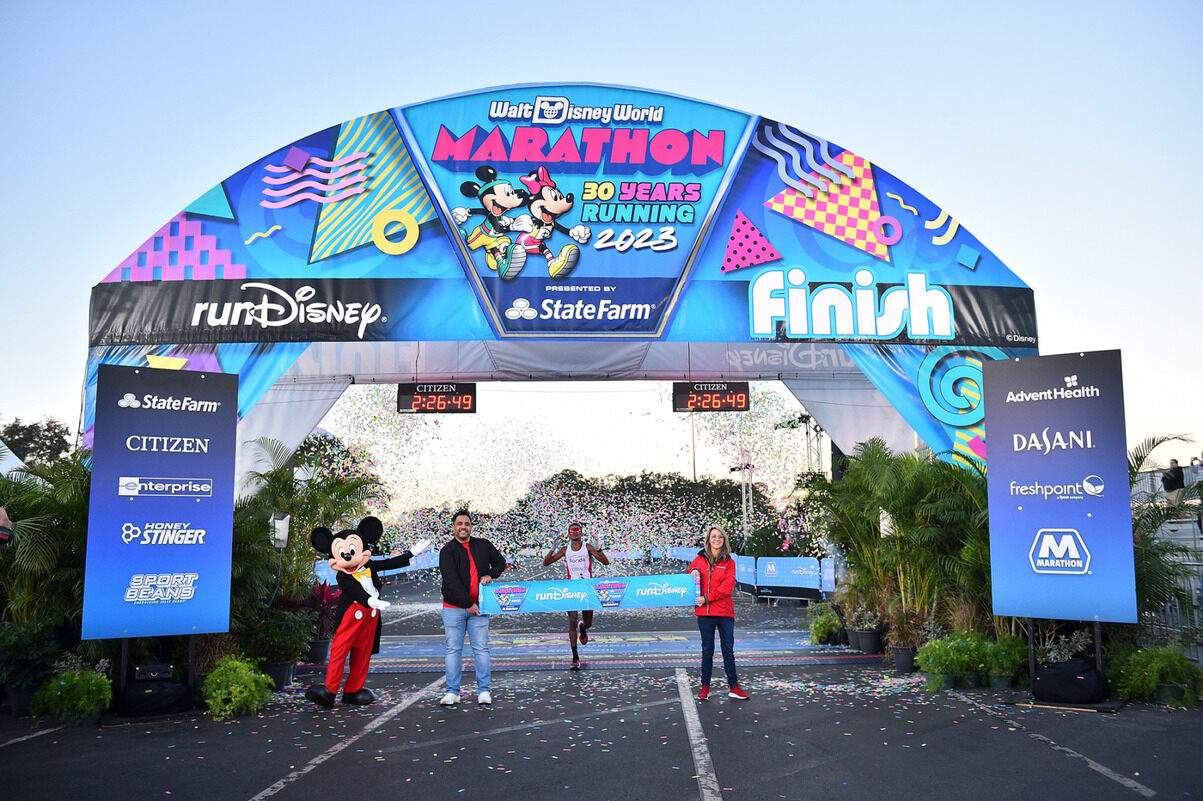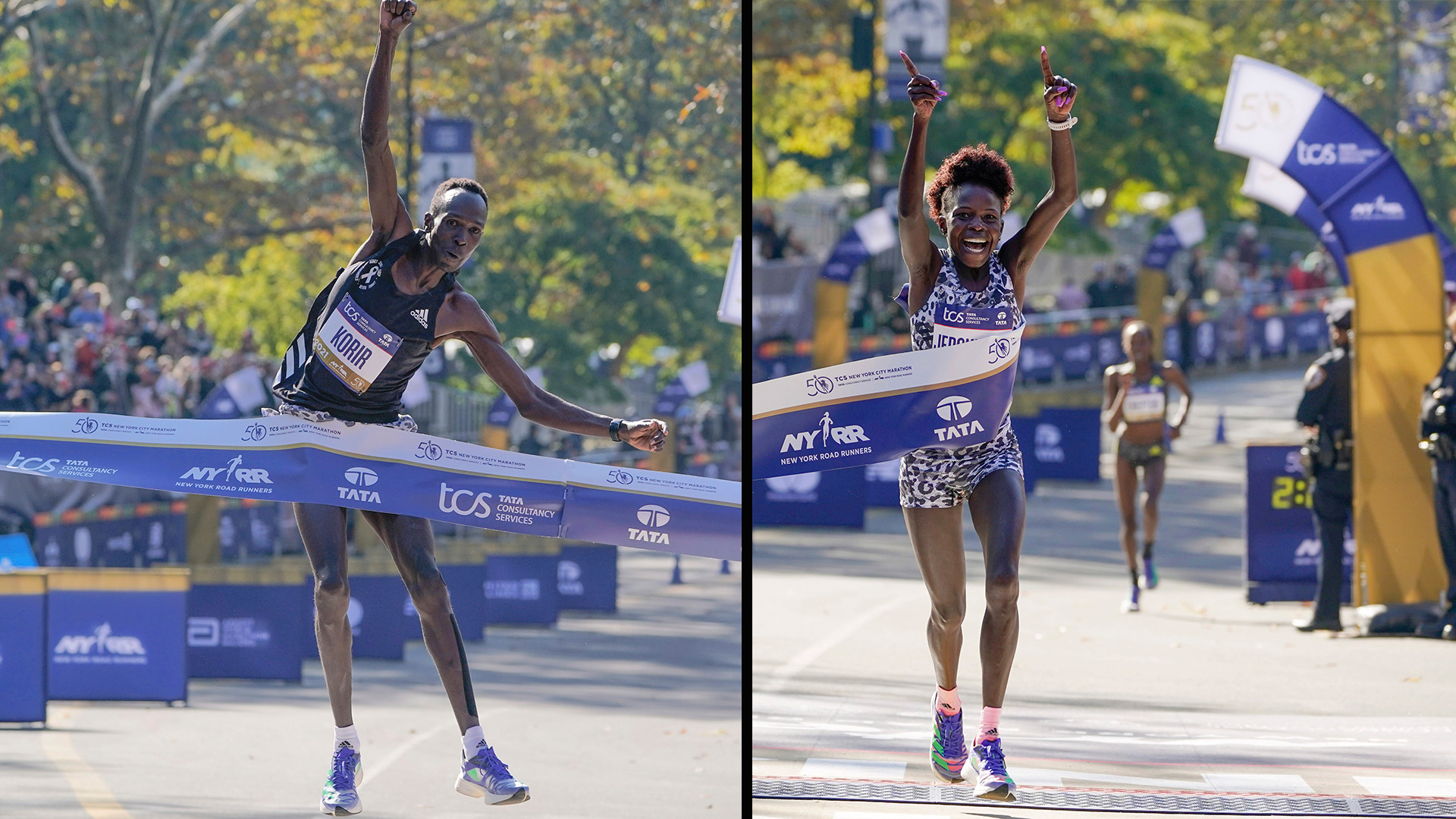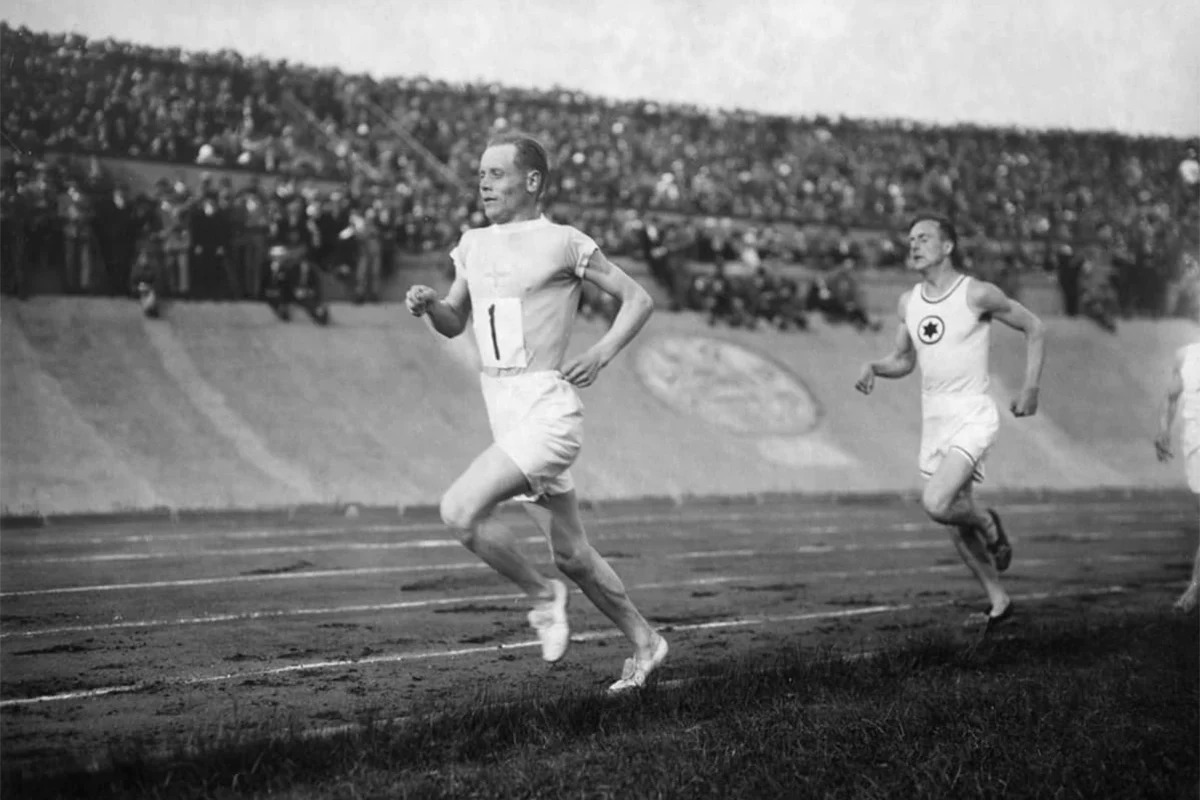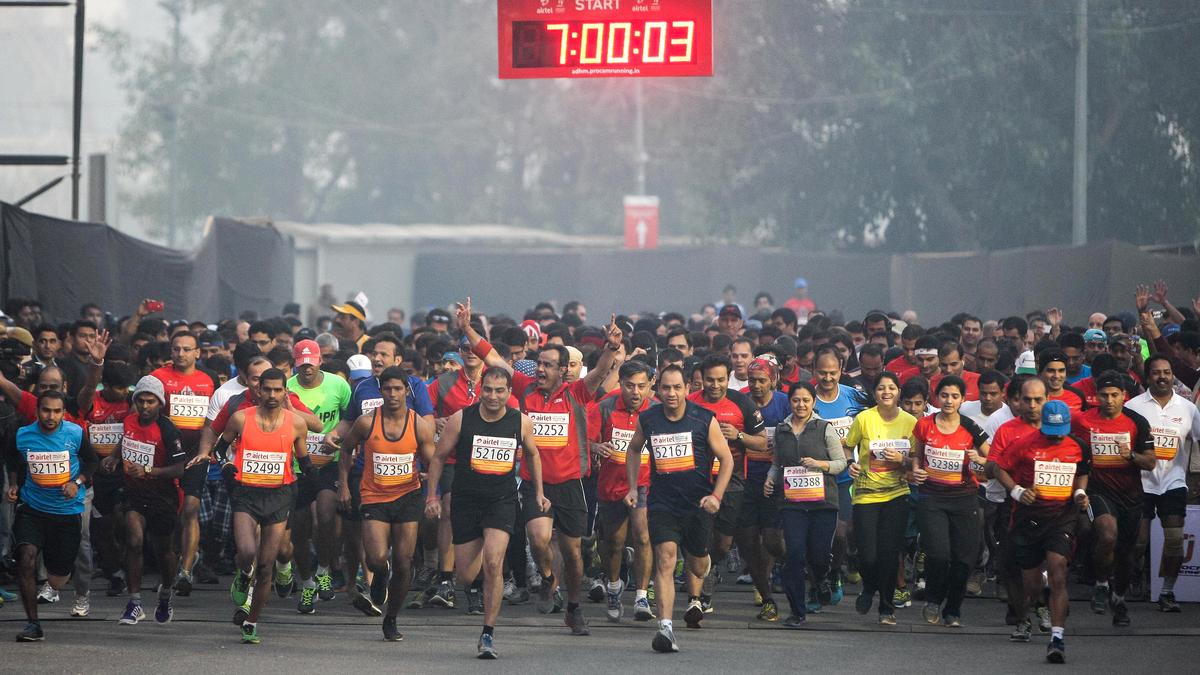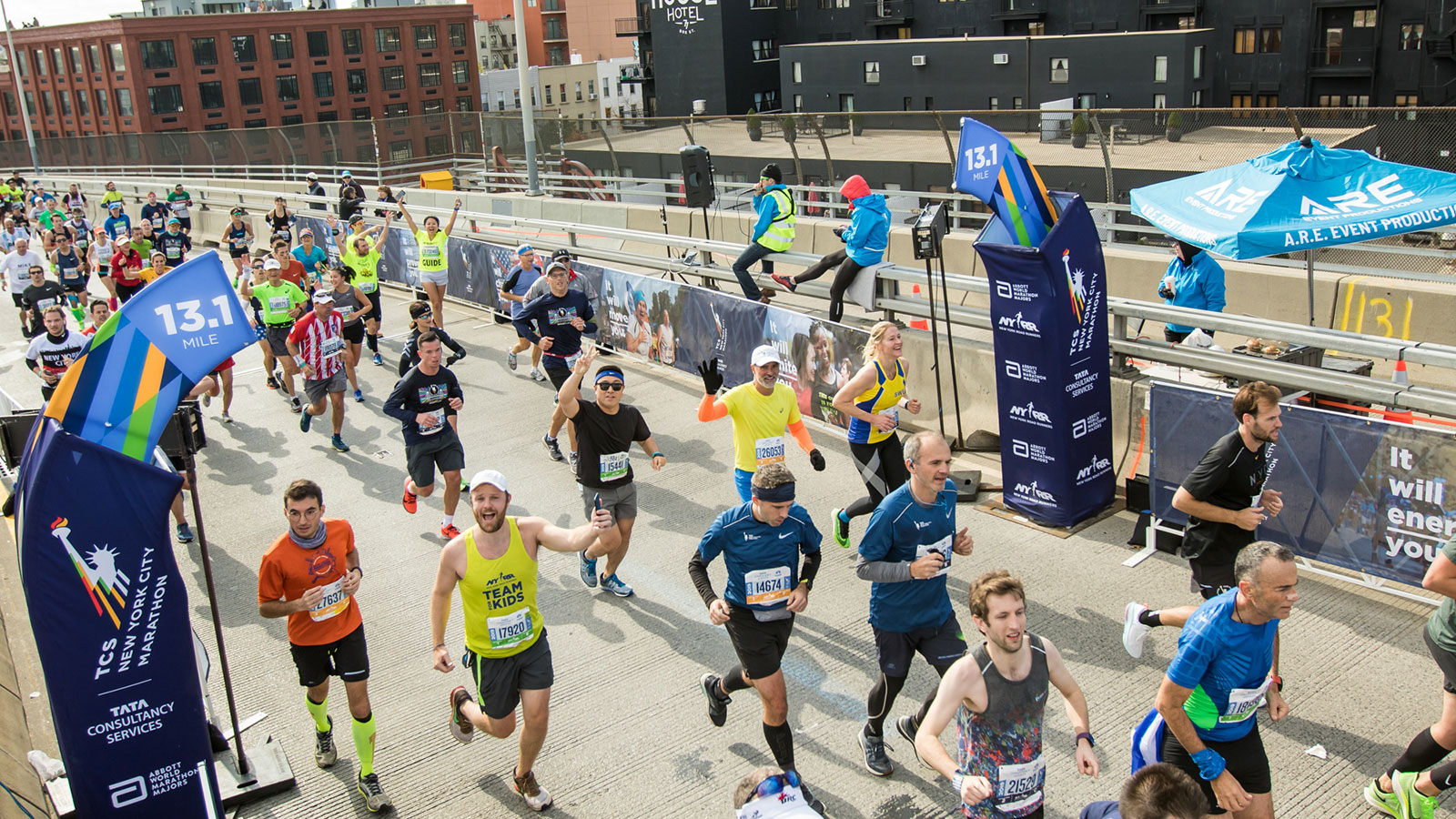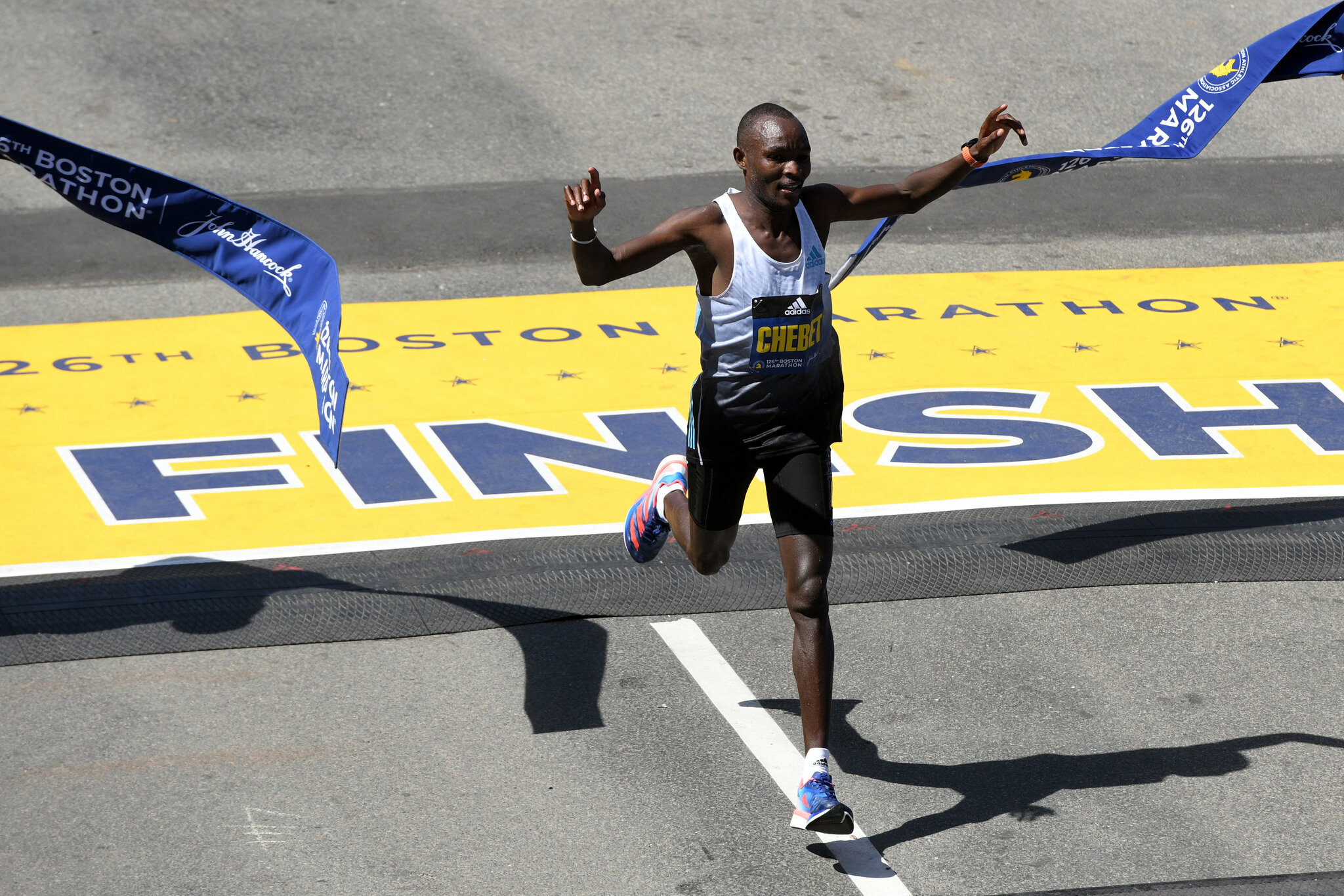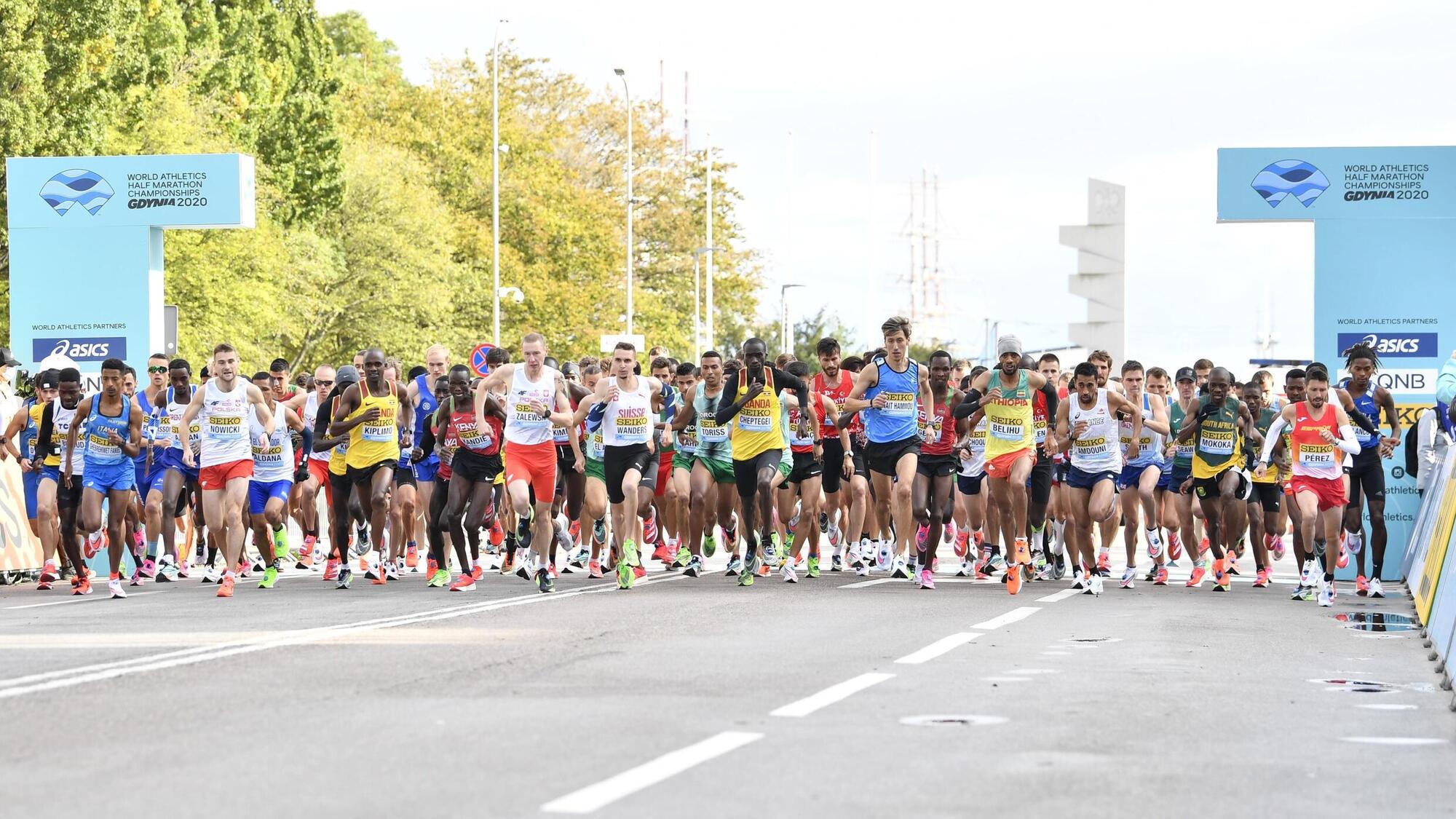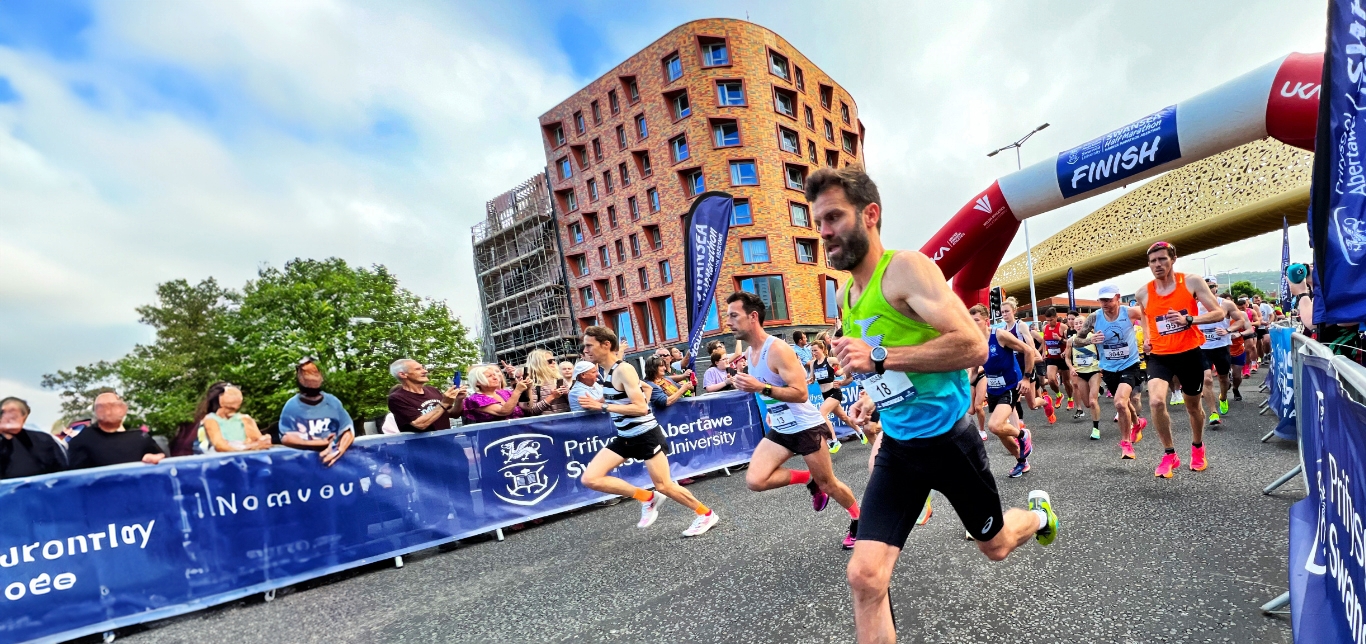

Featured
How To Win A Half Marathon
Modified: August 21, 2023
Featured: Learn the strategies and training tips to win a half marathon and achieve your personal best in this comprehensive guide.
Introduction
Welcome to the world of half marathons, an exciting and challenging endeavor that can provide a great sense of accomplishment. Whether you are a seasoned runner looking to push your limits or a beginner taking your first steps into the world of long-distance running, this article will guide you on your journey to crossing that finish line with pride.
Running a half marathon is no small feat. It requires commitment, dedication, and proper training. But don’t worry, with the right mindset and a solid plan, you can conquer this distance and achieve your goals.
In this article, we will explore the different aspects of preparing for and running a half marathon. From setting your goals and developing a training strategy to incorporating proper nutrition and mental preparation, we will cover it all.
Before we dive into the specifics, it’s important to note that everyone’s journey to running a half marathon is unique. What works for one person may not work for another. It’s essential to listen to your body, adapt your training to your personal needs, and consult with a healthcare professional if you have any underlying health conditions.
Now, let’s lace up our running shoes and get started on this incredible journey!
Setting Goals and Training Strategy
One of the first steps in preparing for a half marathon is setting clear and achievable goals. Whether you aim to finish the race within a specific time frame or simply want to complete it without walking, having a goal in mind will keep you motivated throughout your training.
When setting your goals, it’s important to be realistic and consider your current fitness level. If this is your first half marathon, it might be wise to focus on finishing the race and enjoying the experience rather than setting a specific time goal.
Once you have set your goals, it’s time to develop a training strategy that aligns with those objectives. A well-structured training plan will help ensure that you gradually build your endurance, stamina, and speed.
Many training plans follow a progressive approach, where you gradually increase your weekly mileage and incorporate different types of runs such as long runs, tempo runs, and speed workouts. It’s important to find a plan that works for you and fits into your schedule. Consistency is key, so choose a plan that you can realistically stick to.
In addition to running, cross-training activities like cycling, swimming, or strength training can complement your running routine and help prevent injury. Just make sure not to overdo it and listen to your body’s signals of fatigue or pain.
Furthermore, consider incorporating rest days into your training schedule. Rest days are essential for your body to recover and prevent burnout. Embrace these days and use them for stretching, foam rolling, or simply giving your body the rest it needs.
Lastly, don’t be afraid to modify your training plan as necessary. Life happens, and unforeseen circumstances may require adjustments. It’s better to make necessary modifications and prioritize your health and well-being rather than sticking rigidly to a plan that could lead to injury or burnout.
With clear goals and a well-designed training strategy, you will be on your way to a successful half marathon journey. Remember, it’s not just about the destination; enjoy the process and celebrate every milestone along the way!
Building Endurance and Stamina
Building endurance and stamina is crucial for successfully completing a half marathon. It allows your body to withstand the distance and maintain a steady pace throughout the race. Here are some tips to help you improve your endurance and stamina:
- Gradually increase your mileage: Start with a comfortable distance and gradually increase your weekly mileage by 10% per week. This gradual progression allows your body to adapt and reduces the risk of overuse injuries.
- Incorporate long runs: Long runs are a key component of half marathon training. Aim to complete a weekly long run that gradually increases in distance, simulating race conditions. This helps build both physical and mental endurance.
- Include tempo runs: Tempo runs are runs performed at a challenging but sustainable pace. These workouts develop your lactate threshold, allowing you to maintain a faster pace without accumulating excessive fatigue.
- Integrate interval training: Interval training involves alternating between high-intensity bursts of effort and recovery periods. This type of training improves your anaerobic capacity and helps you sustain faster speeds for longer periods.
- Practice hill training: Running hills strengthens your leg muscles and improves cardiovascular fitness. Incorporate hill repeats into your training routine to build strength and endurance for challenging race terrains.
- Optimize your running form: Proper running form can make a significant difference in your endurance and stamina. Focus on maintaining an upright posture, relaxed shoulders, and a midfoot strike to conserve energy and reduce the risk of injury.
- Include cross-training: Cross-training activities like cycling or swimming can improve cardiovascular fitness while giving your running muscles a break. This helps prevent overuse injuries and enhances overall endurance.
- Get enough rest and recovery: Rest days are just as important as training days. Adequate rest allows your body to repair and rebuild, preventing fatigue and maximizing your training efforts.
Remember, building endurance and stamina takes time. Be patient with yourself and listen to your body’s signals. Push yourself when needed, but also know when to dial back and give yourself extra rest and recovery. Building a solid foundation of endurance and stamina will set you up for success on race day!
Developing Speed and Pace
Developing speed and pace is essential for achieving your desired race goals in a half marathon. By incorporating specific workouts and strategies into your training, you can improve your overall speed and ability to sustain a consistent pace. Here are some tips to help you develop speed and pace:
- Interval Training: Intervals involve alternating between high-intensity efforts and recovery periods. These workouts help improve your cardiovascular fitness, increase your anaerobic capacity, and enhance your ability to sustain faster speeds.
- Track Workouts: Running on a track allows for precise measurements and enables you to practice running at different speeds. Work on intervals of varying distances, such as 400 meters or 800 meters, and gradually increase the speed and number of repetitions.
- Fartlek Runs: Fartlek, which means “speed play” in Swedish, involves incorporating bursts of speed throughout your run. During a fartlek run, randomly pick objects such as lampposts, trees, or landmarks and sprint to them before returning to your regular pace. This helps simulate race conditions and improve your ability to change speeds.
- Tempo Runs: Tempo runs involve running at a comfortably hard pace for an extended period. This helps improve your lactate threshold, enabling you to sustain faster speeds for longer periods without accumulating excessive muscle fatigue.
- Progressive Runs: Progressive runs are runs where you gradually increase your pace throughout the duration of the run. Start at an easy pace and gradually increase your speed until you’re running closer to half marathon race pace. This type of workout helps develop mental and physical toughness while improving your ability to maintain a steady pace.
- Work on Form and Cadence: Pay attention to your running form and aim for an efficient and smooth stride. Focus on increasing your cadence (number of steps per minute) to improve your turnover and running efficiency.
- Interval Training: Incorporating strength and resistance training into your routine can help improve your running economy and overall speed. Focus on exercises that target your leg muscles, such as lunges, squats, and calf raises.
- Mental Strategies: Developing mental toughness is just as important as physical training. Practice visualization techniques to imagine yourself maintaining a strong and steady pace during the race. Incorporate positive self-talk and find ways to stay motivated and focused, especially when faced with challenging moments during your training or the race.
Remember, developing speed and pace takes time and consistent effort. Gradually introduce these workouts into your training plan and gradually increase the intensity as your body adapts. Be patient with yourself, stay consistent, and trust the process. With dedication and perseverance, you will see improvements in your speed and pace, bringing you closer to accomplishing your half marathon goals.
Proper Nutrition and Hydration
Proper nutrition and hydration play a vital role in your half marathon training and race day performance. Fueling your body with the right nutrients and staying adequately hydrated will help optimize your training, enhance your recovery, and sustain your energy levels. Here are some guidelines for proper nutrition and hydration:
- Balance Your Macros: Aim to consume a balanced diet that includes carbohydrates, proteins, and healthy fats. Carbohydrates provide the energy needed for your runs, proteins aid in muscle repair and recovery, and healthy fats promote overall health and satiety.
- Carbohydrate Loading: In the days leading up to the race, increase your carbohydrate intake to help build glycogen stores in your muscles. Include foods such as whole grains, fruits, and vegetables to ensure an adequate supply of carbohydrates.
- Pre-Run Fueling: Before a long run or race, consume a light meal or snack that includes easily digestible carbohydrates and a little bit of protein. This can help provide sustained energy throughout your run. Experiment with different pre-run meals to find what works best for you.
- During Run Fueling: During your runs, especially those lasting longer than an hour, it’s important to refuel with carbohydrates to avoid depletion. Experiment with different energy gels, chews, or sports drinks to find the fueling method that works best for you.
- Post-Run Recovery: Within 30 minutes of completing your run, consume a balanced meal or snack that includes carbohydrates and protein to aid in muscle recovery and glycogen replenishment. This can help reduce muscle soreness and speed up your recovery time.
- Stay Hydrated: Proper hydration is crucial for optimal performance. Drink water throughout the day and consider carrying a hydration belt or using handheld water bottles during your long runs. You can also include electrolyte-rich beverages or sports drinks to replenish essential minerals lost through sweat.
- Listen to Your Body: Every individual is different, and what works for one person may not work for another. Pay attention to your body’s signals and adjust your nutrition and hydration strategies accordingly. Experiment during training runs to find what foods and fluids work best for you.
- Avoid Trying Anything New on Race Day: Stick to your tried and tested nutrition and hydration routine on race day. Avoid trying any new foods, drinks, or supplements that your body is not accustomed to, as they may cause digestive issues or discomfort.
Remember, nutrition and hydration are personal to each individual. It’s important to find what works best for your body through trial and error during training. Consult with a registered dietitian or sports nutritionist for personalized guidance tailored to your specific needs. By fueling your body properly and staying hydrated, you will have the energy and strength to conquer your half marathon with confidence.
Mental Preparation and Focus
Mental preparation and focus are just as important as physical training when it comes to successfully completing a half marathon. Developing a strong and positive mindset will help you overcome challenges, push through fatigue, and stay motivated throughout your training and on race day. Here are some strategies for mental preparation and focus:
- Set Clear and Realistic Goals: Having clear and achievable goals for your half marathon will give you something to work towards and keep you motivated. Make sure your goals are realistic based on your current fitness level and consider both performance-based goals and personal satisfaction goals.
- Visualize Success: Use visualization techniques to imagine yourself crossing the finish line successfully. Visualize the sensations of running strong, maintaining a steady pace, and the feeling of accomplishment when you complete the race. This helps build confidence and mentally prepares you for the challenges that may arise.
- Practice Positive Self-Talk: Replace negative thoughts with positive and encouraging self-talk. Use affirmations such as “I am strong,” “I can do this,” and “I am ready for this challenge.” Remind yourself of how far you have come in your training and focus on your strengths throughout the race.
- Break the Race Down: Instead of focusing on the entire distance, break the race into smaller segments or milestones. Set mini-goals, such as reaching the halfway point or completing a certain number of kilometers. This approach helps make the daunting task more manageable and helps maintain focus and motivation.
- Practice Mindfulness and Presence: During your runs and on race day, practice being fully present in the moment. Pay attention to your breath, the sensations in your body, and the environment around you. By focusing on the present moment, you can keep distractions at bay and maintain your focus on the task at hand.
- Use Mantras or Power Words: Find a mantra or power word that resonates with you and use it during your runs and on race day. Repeat it mentally or out loud to help stay focused and push through challenging moments.
- Visualize and Plan for Challenges: Anticipate potential challenges that may arise during the race, such as fatigue, muscle soreness, or negative thoughts. Visualize yourself overcoming these challenges and create a plan for how you will deal with them. Having a strategy in place helps you stay calm and focused during difficult moments.
- Reframe Negative Thoughts: Negative thoughts may arise during your training or the race. Instead of dwelling on them, reframe them into positive or neutral thoughts. For example, if you catch yourself thinking “I can’t do this,” replace it with “I am capable of pushing through this challenge.”
Remember, the mind is a powerful tool. Train it alongside your body so that it becomes your ally during the half marathon. By implementing these mental preparation techniques and staying focused, you can overcome obstacles and achieve your goals, allowing you to truly enjoy the journey and experience of running a half marathon.
Injury Prevention and Recovery
When training for a half marathon, it’s crucial to prioritize injury prevention and ensure proper recovery. Taking proactive measures to prevent injuries and allowing your body to recover adequately will help you stay healthy, consistent, and ready for race day. Here are some tips for injury prevention and recovery:
- Gradual Progression: Avoid the temptation to increase your mileage or intensity too quickly. Gradually increase your training load to allow your body time to adapt and minimize the risk of overuse injuries.
- Listen to Your Body: Pay attention to any signs of pain, discomfort, or fatigue. Rest if needed and don’t ignore minor aches or pains, as they could develop into more serious injuries if not addressed.
- Wear Suitable Running Shoes: Invest in a good pair of running shoes that provide proper support and cushioning for your feet. Consider getting fitted at a running specialty store to ensure the right fit for your running style and foot shape.
- Warm Up and Cool Down: Prior to your runs, incorporate dynamic warm-up exercises to prepare your muscles and joints for the activity. After your runs, perform static stretches to promote flexibility and aid in recovery.
- Strength Training: Include strength training exercises in your routine to strengthen muscles and improve overall body stability. Focus on exercises that target key muscle groups involved in running, such as the core, glutes, and lower body.
- Cross-Training: Engage in cross-training activities, such as swimming or cycling, to give your running muscles a break while maintaining cardiovascular fitness. This helps prevent overuse injuries and allows for active recovery.
- Foam Rolling and Stretching: Incorporate foam rolling and stretching exercises into your routine to release tight muscles and improve flexibility. This can help alleviate muscle soreness and avoid common running-related injuries.
- Proper Nutrition and Hydration: Proper nutrition and hydration support recovery and aid in injury prevention. Ensure you are consuming a well-balanced diet that includes adequate nutrients, and hydrate properly before, during, and after your runs.
- Rest and Recovery: Allow your body ample time to rest and recover. Schedule regular rest days into your training plan and prioritize sleep to give your muscles and immune system time to repair and rebuild.
- Seek Professional Help: If you experience persistent pain or discomfort, consider seeking help from a healthcare professional, such as a physical therapist or sports medicine specialist. They can provide a proper diagnosis, recommend treatment, and help you prevent further injury.
Remember, prioritizing injury prevention and recovery is essential for long-term success and enjoyment in distance running. By incorporating these strategies into your training plan and being mindful of your body’s needs, you can minimize the risk of injury and maintain your consistency, allowing you to reach your half marathon goals with confidence.
Race Day Strategies
Race day is a culmination of all your hard work and preparation. To ensure a successful and enjoyable half marathon experience, it’s important to have effective race day strategies in place. Here are some tips to help you navigate race day:
- Arrive Early: Plan to arrive at the race venue early to allow time for parking, bib pickup, and using the restroom. This will help minimize stress and allow you to start the race feeling calm and prepared.
- Stick to Your Routine: Stick to your pre-race routine that worked well during your training. Eat a familiar breakfast, wear comfortable race attire, and complete your warm-up routine as you have practiced.
- Start Slow and Steady: Begin the race at a slightly slower pace than your target pace. Starting too fast can lead to burnout later on. Gradually pick up the pace as the race progresses and you find your rhythm.
- Stay Hydrated and Fuel Smart: Utilize the aid stations provided during the race to stay properly hydrated. Stick to your practiced fueling strategy and consume energy gels, chews, or sports drinks according to your plan.
- Maintain a Positive Mindset: During the race, stay positive and focus on your goals. Embrace any challenges as opportunities to push yourself and stay motivated. Use your visualization techniques and positive self-talk to overcome any negative thoughts or doubts.
- Take Advantage of Crowd Support: Use the energy from the cheering spectators to boost your motivation and keep you going strong. High-five spectators, smile, and acknowledge their support. Their encouragement can make a significant difference in your race experience.
- Break the Race Into Smaller Segments: Mentally divide the race into smaller segments or landmarks. Focus on reaching each milestone, such as the halfway point or the next aid station. This helps break down the distance and gives you a sense of accomplishment along the way.
- Stay Focused and Maintain Form: As fatigue sets in, it is crucial to maintain proper running form. Focus on your posture, keep your strides smooth, and maintain a relaxed upper body. This will help conserve energy and prevent unnecessary muscle fatigue.
- Embrace the Final Push: As you approach the final miles of the race, tap into your mental and physical reserves and give it your all. Push through any discomfort, maintain a strong pace, and savor the satisfaction of nearing the finish line.
- Celebrate Your Achievement: As you cross the finish line, take a moment to celebrate your accomplishment. Acknowledge your hard work and dedication that brought you to this point. Enjoy the feeling of pride and accomplishment as you reflect on your journey to completing a half marathon.
Remember, every race is different, and it’s essential to adapt your race day strategies based on the specific circumstances. Practice these strategies during your training runs to find what works best for you. With careful planning and a focused mindset, you can make race day a memorable and successful experience.
Final Thoughts
Completing a half marathon is a significant achievement that requires dedication, perseverance, and a well-rounded approach to training. Throughout this article, we have explored various aspects of preparing for and running a half marathon.
Setting clear and realistic goals, developing a training strategy, building endurance and stamina, improving speed and pace, focusing on proper nutrition and hydration, mental preparation, injury prevention, and implementing effective race day strategies are all key components to a successful half marathon journey.
Remember that every training plan should be personalized to your individual needs and capabilities. It’s essential to listen to your body, be mindful of any signs of fatigue or injury, and make adjustments as necessary.
In the end, your half marathon journey is about more than just reaching the finish line. It’s about the personal growth, perseverance, and self-discovery that comes with pushing yourself beyond your limits. Embrace the process, celebrate every milestone, and enjoy the incredible experience of running a half marathon.
So, lace up your running shoes, create your training plan, and embark on this incredible journey. With the right mindset, dedication, and proper preparation, you are well on your way to crossing that half marathon finish line with pride.

